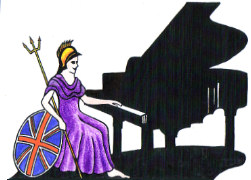Teachers, Accompanists and Piano Entertainers in the UK

UK Piano Page

Unit 3C
Bull Lane Industrial Estate
Sudbury, Suffolk CO10 OBD
England
162 Anyards Road
Cobham, Surrey KT11 2LH
England
43-45 Bonchurch Road
Brighton, East Sussex BN2 3PJ
England
Largest Selection of Upright and Grand Pianos on
Central Arcade
Newcastle upon Tyne, Tyne and Wear NE1 5BP
England
JG Windows Ltd is one the UK's longest established
Harrogate Road
Beamsley Hill
Skipton, North Yorkshire BD23 6HZ
England
Main dealers for Kemble Pianos. Complete range
Music Festival for performers and guests Our 10th
18-06-2022 01:30PM
The Morecambe Bay Piano Group was set up to extend
11-12-2021 02:00PM
The Morecambe Bay Piano Group was set up to extend
08-01-2022 02:00PM
The Morecambe Bay Piano Group was set up to extend
12-02-2022 02:00PM